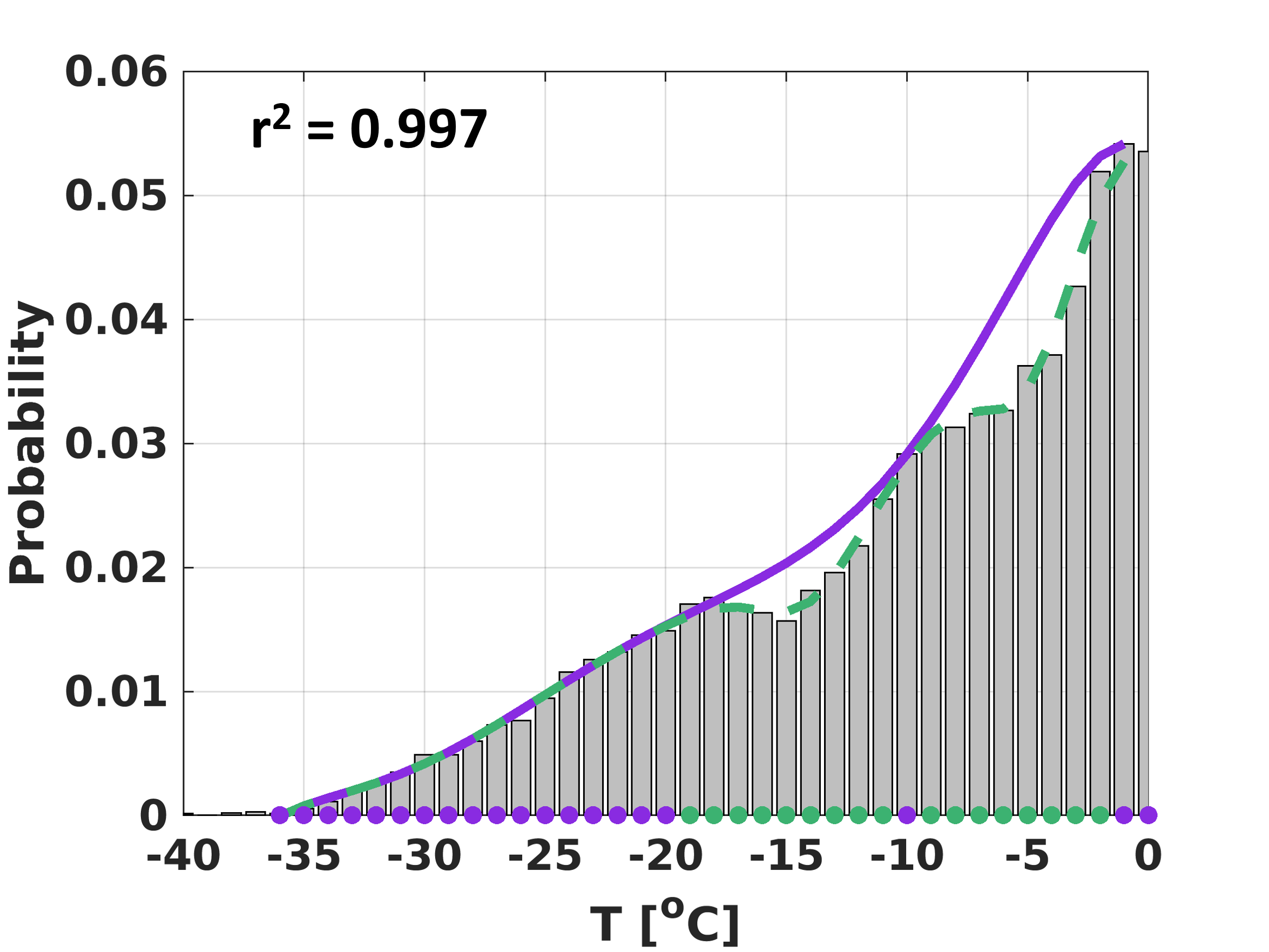Habit-dependent vapor growth modulates the macrophysical occurrence of arctic supercooled clouds
Submitter
Silber, Israel — Pacific Northwest National Laboratory
Area of Research
Cloud Distributions/Characterizations
Journal Reference
Silber I, P McGlynn, J Harrington, and J Verlinde. 2021. "Habit‐Dependent Vapor Growth Modulates Arctic Supercooled Water Occurrence." Geophysical Research Letters, 48(10), e2021GL092767, 10.1029/2021GL092767.
Science

Figure 1. Probability of topmost unseeded liquid given temperature, P(L|T) (bars). The green and purple curves illustrate polynomial fits using the distribution data points representing habit effects and a qualitative distribution estimate for spheres, respectively. From journal.
Analysis of long-term data collected at Utqiaġvik, Alaska to explore the impacts of cloud processes on the probability of finding supercooled water given cloud temperature in the topmost unseeded liquid-bearing layers indicates that habit-dependent vapor growth of ice crystals modulates the macrophysical occurrence of supercooled water in polar clouds.
Impact
The significant macrophysical impact of ice habit growth suggests that it should be considered in model parameterizations to avoid biases and/or error compensation. Our methodology, which includes the isolation of the topmost unseeded liquid-bearing cloud layers, is adaptable for spherical ice treatments implemented in models (see image), amenable for use with satellite measurements to give global impartial observational targets for model evaluations, and may allow empirical characterization of bulk responses to seeding and possibly secondary ice effects.
Summary
Clouds are responsible for the highest uncertainty in climate model predictions, partially due to deficiencies in the representation of processes controlling the temperature-dependent cloud water phase. We use long-term measurements collected at Utqiaġvik to examine the probability of finding topmost (per profile) unseeded supercooled water given temperature, P(L|T). The resultant probability enables the identification of processes affecting liquid water desiccation. An ensemble of model simulations indicates that significantly lower occurrence of supercooled clouds (by more than 20%) around certain temperatures is the result of the shape and associated rapid growth of precipitating ice crystals formed in these clouds. These fast-growing ice crystals can dry their parent clouds’ environment, occasionally resulting in cloud dissipation. P(L|T) as defined in this study can serve as a robust observational metric by precluding ice-effect overweighting (e.g., via “double counting” in the case of phase ratios). Knowing that habit-evolving microphysics schemes are not on the near horizon for the bulk of large-scale models, we provide a framework to use P(L|T) statistics as observational targets for such models (e.g., climate models).
Keep up with the Atmospheric Observer
Updates on ARM news, events, and opportunities delivered to your inbox
ARM User Profile
ARM welcomes users from all institutions and nations. A free ARM user account is needed to access ARM data.


















